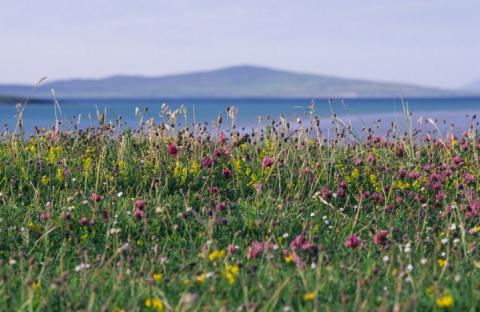FULL REVIEW PAPER
Image

What is already happening?
- Evidence suggests that dune slacks in England are drying out due to changes in hydrological conditions that may be linked to climate change. There has been a 30% reduction in dune-slack extent in the largest protected sites between 1990 and 2012. Remaining dune slacks show a shift from wetter to drier plant communities.
- The total extent of saltmarshes in the UK has decreased due to erosion from sea-level rise and coastal ‘squeeze’ from hard, built structures preventing natural roll back.
CONFIDENCE LEVEL
MEDIUM
Medium evidence, medium agreement
Impacts on geomorphology and plant ecology are well understood, but little is known about impacts on microbes and animals. For saltmarsh, there is uncertainty around the interaction between stressors and natural erosion/accretion phases. There is more evidence on response of shingle systems to storm events.
What could happen in the future?
- Sea-level rise and erosion rates are the greatest risk to coastal habitats. Sea-level rise results in deeper waters and bigger waves reaching saltmarsh, dunes, shingle and maritime cliffs, causing erosion at the seaward edge.
- Changes in patterns of rainfall or temperature will affect vegetation composition of many coastal wetlands. Evapo-transpiration is likely to increase, leading to greater impact of summer droughts.
- Modelling suggests that dune water tables may drop by over a metre by 2080 in some parts of the UK, resulting in potential shifts in vegetation species communities from wet to more dry tolerant flora.
CONFIDENCE LEVEL
LOW
Low evidence, medium agreement
There is high confidence that systems will change, but lower confidence in how they might change, due to the need to understand sediment budgets. As with shingle, research relating to climate change impacts on vegetation is low. Predicting cliff retreat remains difficult.
Key Challenges and Emerging Issues
- Integrating nature-based approaches into coastal management so ecosystems can self-regulate in response to climate change.
- Creating more natural shorelines to help restore the natural function of coastal processes, increase resilience, and promote cultural acceptance of their dynamic nature.
- Conducting more research on the potential social impacts of climate change on the UK coast, which are wide ranging and include health, well-being, and livelihoods.
- Enhancing collaboration between environmental economists and coastal and marine scientists to provide robust natural capital valuations for coastal habitats.
- Developing a multidisciplinary catchment-to-coast approach to understand the role of climate change in transferring carbon from land to sea.
- Accounting for coastal habitats in national greenhouse gas inventories and adopt a true multidisciplinary catchment-to-coast approach to determine their relative importance within the global carbon cycle.